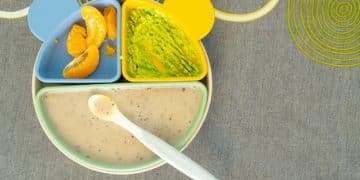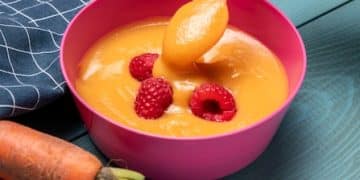Homemade Baby Food: A Step-by-Step Guide to Nutritious Purees
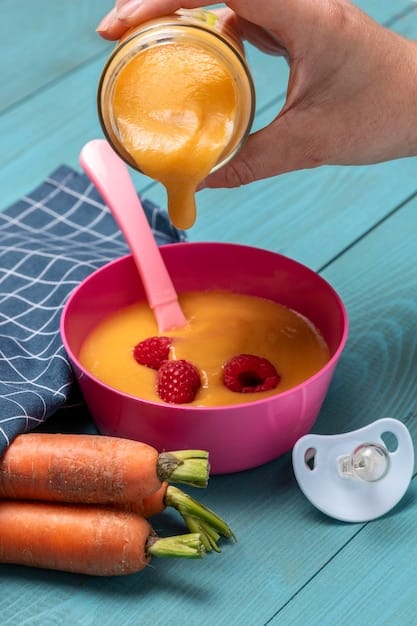
Homemade baby food offers a nutritious and cost-effective alternative to store-bought options, allowing parents to control ingredients and tailor meals to their baby’s developmental needs, ensuring a healthy start to life through fresh, homemade purees and meals.
Embarking on the journey of feeding your little one solids is an exciting milestone. Making homemade baby food is a fantastic way to ensure your baby receives the freshest, most nutritious meals tailored to their needs. This guide provides a step-by-step approach to creating delicious and healthy purees at home, making mealtime a joyful experience for both you and your baby.
Why Choose Homemade Baby Food?
Choosing homemade baby food comes with numerous advantages that extend beyond just saving money. It allows you to have complete control over what your baby eats, ensuring they receive the best possible nutrition without any unnecessary additives or preservatives. Let’s delve deeper into the benefits of making your own baby food.
Control Over Ingredients
One of the biggest advantages of making your own baby food is knowing exactly what goes into each meal. You can select fresh, organic produce, ensuring your baby is getting the purest form of nutrition. This control is especially important if your baby has allergies or sensitivities.
Cost-Effective
While the initial investment in a food processor or blender might seem daunting, making your own baby food can save you a significant amount of money in the long run. Store-bought baby food often comes with a premium price tag, whereas fresh produce can be purchased in bulk and prepared at home for a fraction of the cost.
Nutritional Value
Homemade baby food is often more nutritious than store-bought alternatives. Freshly prepared food retains more vitamins and minerals, which are essential for your baby’s growth and development. Plus, you can tailor the nutrient content to meet your baby’s specific needs.
- Ensures fresh, whole ingredients.
- Avoids preservatives and additives.
- Customizable to meet dietary needs.
- Retains more vitamins and minerals.
In conclusion, opting for homemade baby food not only gives you control over ingredients and saves money but also ensures your baby receives the highest nutritional value possible. It’s a win-win for both you and your little one.
Essential Equipment for Making Baby Food
Before you dive into making your own baby food, it’s essential to have the right equipment on hand. Having the right tools will make the process smoother, more efficient, and ultimately more enjoyable. Here’s a list of must-have equipment for creating nutritious purees at home.
Blender or Food Processor
A high-quality blender or food processor is the cornerstone of making homemade baby food. These appliances are perfect for creating smooth, consistent purees. Choose one that is easy to clean and has multiple speed settings for different textures.
Steamer Basket
Steaming is one of the best ways to cook fruits and vegetables for baby food because it helps retain nutrients that can be lost through other cooking methods like boiling. A steamer basket that fits into your saucepan is a simple and effective tool.
Ice Cube Trays or Small Containers
Portioning and freezing baby food is essential for convenience and preserving freshness. Ice cube trays are perfect for creating small, single-serving portions. Once frozen, you can transfer the cubes to freezer bags for longer storage. Small, BPA-free containers are also a great option.
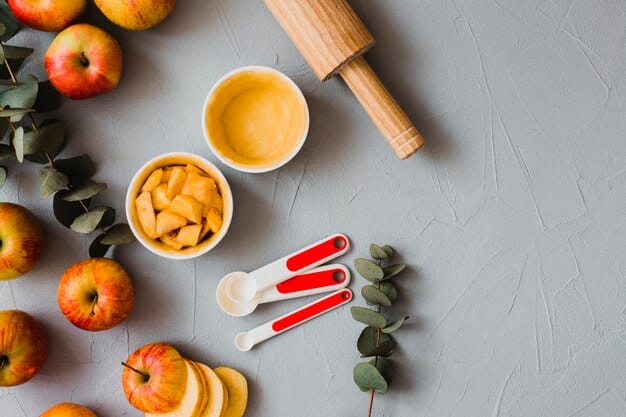
- Blender or Food Processor for smooth purees.
- Steamer Basket to retain nutrients.
- Ice Cube Trays for easy portioning.
- Small Containers for freezing and storage.
In summary, investing in these essential pieces of equipment will set you up for success in making homemade baby food. They will streamline the process, making it easier to create healthy and delicious meals for your little one.
Step-by-Step Guide to Making Homemade Purees
Creating homemade baby food doesn’t have to be complicated. With a few simple steps, you can make nutritious and delicious purees that your baby will love. Here’s a step-by-step guide to help you get started, ensuring that each meal is prepared safely and effectively.
Choose Your Produce
Start by selecting high-quality, ripe fruits and vegetables. Organic produce is ideal, but if it’s not available, make sure to thoroughly wash and peel conventionally grown options. Popular choices include sweet potatoes, carrots, apples, and bananas.
Prepare the Food
Wash all produce thoroughly. Peel and chop the fruits and vegetables into small, uniform pieces. This ensures even cooking and helps to create a smoother puree. Remove any seeds or pits from fruits.
Cook the Food
Steaming is the best cooking method for preserving nutrients. Place the chopped produce in a steamer basket over boiling water and cook until tender. Alternatively, you can bake or boil the produce, but be mindful of nutrient loss. Avoid adding salt or sugar.
Puree the Food
Transfer the cooked produce to a blender or food processor. Add a small amount of water, breast milk, or formula to achieve a smooth consistency. Blend until the puree is completely smooth. If needed, strain the puree to remove any lumps.
Store the Puree
Allow the puree to cool slightly before portioning it into ice cube trays or small containers. Label each portion with the date and contents. Freeze the puree for up to three months or refrigerate for up to 48 hours.
- Select high-quality, ripe produce.
- Wash, peel, and chop into small pieces.
- Steam until tender.
- Blend with liquid to desired consistency.
- Portion and store in freezer or refrigerator.
Following this step-by-step guide will help you create nutritious and delicious homemade baby food. Remember to always practice food safety and introduce new foods one at a time to monitor for any allergic reactions.
Best Fruits and Vegetables for Baby Food
When it comes to making homemade baby food, certain fruits and vegetables are particularly well-suited for young palates and developing digestive systems. These options are not only easy to digest but also packed with essential nutrients that support your baby’s growth and health. Let’s explore some of the best choices.
Sweet Potatoes
Sweet potatoes are a fantastic first food due to their naturally sweet flavor and creamy texture when pureed. They are rich in vitamin A, fiber, and antioxidants, making them a nutritious choice for your baby.
Avocados
Avocados are a nutritional powerhouse, packed with healthy fats, vitamins, and minerals. Their smooth, creamy texture makes them easy for babies to eat, and they don’t require cooking, saving you time and effort.
Bananas
Bananas are another excellent option for first foods. They are soft, easy to digest, and naturally sweet, without needing any added sugar. Bananas are also a good source of potassium and fiber.
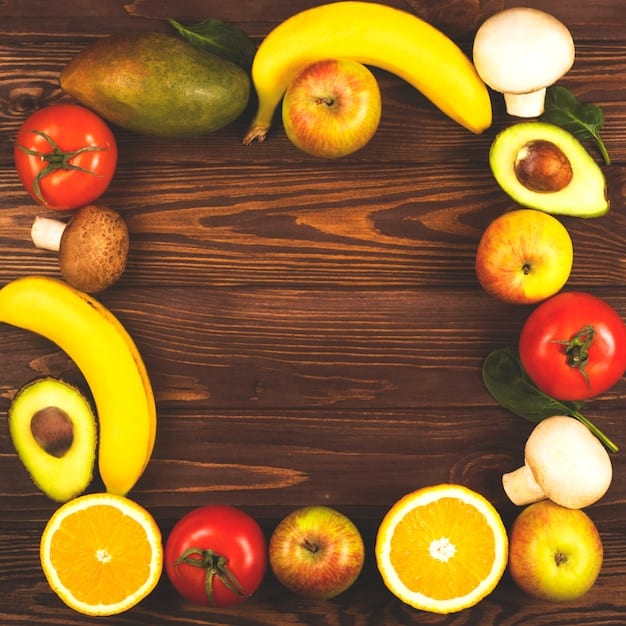
- Sweet Potatoes: Rich in Vitamin A and Fiber.
- Avocados: Packed with Healthy Fats.
- Bananas: Easy to Digest and a Good Source of Potassium.
- Carrots: Excellent Source of Beta-Carotene.
These fruits and vegetables are excellent choices for making homemade baby food. They provide a range of essential nutrients and are gentle on your baby’s digestive system. Remember to introduce new foods one at a time to monitor for any allergic reactions.
Food Safety Tips for Homemade Baby Food
Ensuring the safety of your homemade baby food is paramount to protect your baby from foodborne illnesses. Practicing proper food handling and storage techniques will help you minimize risks and keep your little one healthy. Here are some essential food safety tips to keep in mind.
Wash Hands and Surfaces
Always wash your hands thoroughly with soap and water before preparing baby food. Clean all countertops, cutting boards, and utensils with hot, soapy water to prevent cross-contamination.
Use Fresh Ingredients
Choose fresh, high-quality produce for making baby food. Avoid using fruits or vegetables that are bruised, damaged, or past their prime. Organic produce is preferred to minimize exposure to pesticides.
Cook Food Thoroughly
Ensure that fruits and vegetables are cooked thoroughly to kill any harmful bacteria. Use a food thermometer to check the internal temperature if necessary. Steaming, baking, or boiling are all effective cooking methods.
In conclusion, following these food safety tips will help you create homemade baby food that is both nutritious and safe for your baby. Always prioritize cleanliness, freshness, and proper storage to protect your little one from potential health risks.
Introducing New Foods and Monitoring for Allergies
Introducing new foods to your baby is an exciting milestone, but it’s essential to do so carefully and methodically, especially when making homemade baby food. This approach helps you identify potential allergies and ensures your baby tolerates each new food well. Here’s how to introduce new foods and monitor for any allergic reactions.
Introduce One Food at a Time
When introducing solids, start with single-ingredient purees and introduce only one new food every 3-5 days. This allows you to easily identify the cause if your baby develops an allergic reaction.
Start Small
Begin with a small amount of the new food, such as 1-2 teaspoons. Gradually increase the portion size over the next few days as your baby tolerates the food well.
[Emoji 1 + Key Point 1 in en-US]
[Emoji 2 + Key Point 2 in en-US]
[Emoji 3 + Key Point 3 in en-US]
[Emoji 4 + Key Point 4 in en-US]
Frequently Asked Questions About Homemade Baby Food
What are the benefits of making my own baby food?
▼
First, you control the ingredients, ensuring no additives or preservatives. Second, it’s often more cost-effective than store-bought options. Finally, homemade food can be more nutritious, retaining more vitamins and minerals.
How do I store homemade baby food?
▼
Store homemade baby food in airtight containers in the refrigerator for up to 48 hours. For longer storage, freeze portions in ice cube trays or freezer-safe containers for up to three months. Always label with the date.
What equipment do I need to make baby food?
▼
Essential equipment includes a blender or food processor for pureeing, a steamer basket for cooking, and ice cube trays or small containers for portioning and freezing. A good peeler and cutting board are also helpful.
How do I introduce new foods to my baby?
▼
Introduce one new food at a time, waiting 3-5 days before introducing another. Start with a small amount and watch for any allergic reactions such as rash, hives, or digestive upset.
What are some good first foods for babies?
▼
Good first foods include single-ingredient purees like sweet potato, avocado, banana, and carrots. These are easy to digest and packed with essential nutrients, providing a gentle start to solid foods.
Conclusion
Making homemade baby food is a rewarding experience that allows you to provide the freshest and most nutritious meals for your little one. By following this comprehensive guide, you can confidently create delicious purees tailored to your baby’s needs, ensuring a healthy start to their culinary journey.
Read more content



